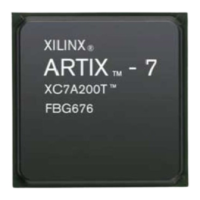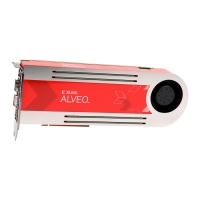MicroBlaze Processor Reference Guide 117
UG984 (v2018.2) June 21, 2018 www.xilinx.com
Chapter 2: MicroBlaze Architecture
Trace Interface Overview
The MicroBlaze trace interface exports a number of internal state signals for performance
monitoring and analysis.
RECOMMENDED: Xilinx recommends that users only use the trace interface through Xilinx developed
analysis cores.
This interface is not guaranteed to be backward compatible in future releases of MicroBlaze.
See
Table 3-16 in Chapter 3, MicroBlaze Signal Interface Description for a list of exported
signals.
